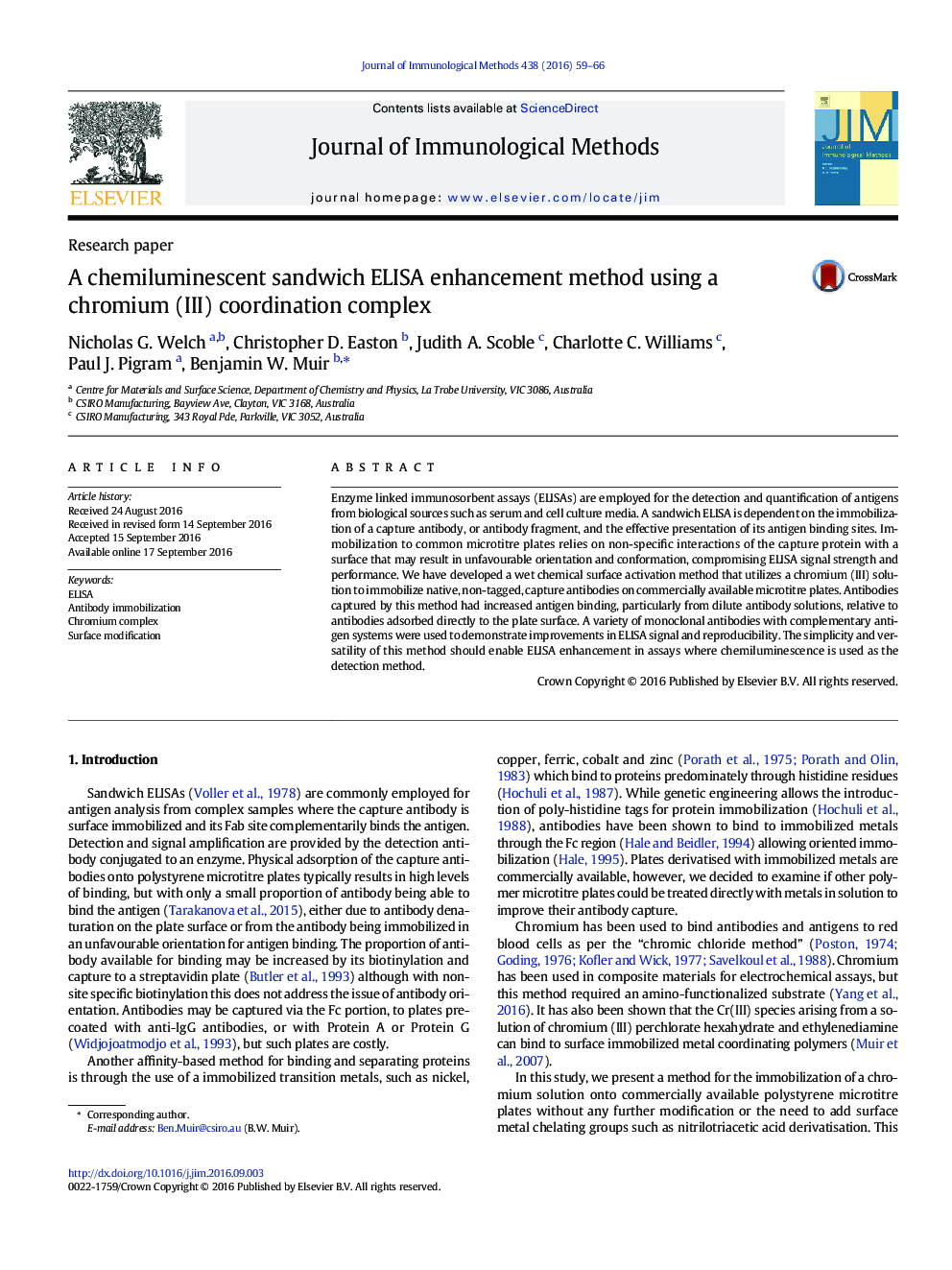| Article ID | Journal | Published Year | Pages | File Type |
|---|---|---|---|---|
| 5522105 | Journal of Immunological Methods | 2016 | 8 Pages |
â¢ELISA plates treated with chromium (III) in solution show increased binding of capture antibody in a sandwich ELISAâ¢More capture antibody is in a favourable orientation to bind antigen compared with immobilisation on untreated platesâ¢The modification improves Fab' and F(abâ²)2 immobilisationâ¢The modification is applicable to many ELISA plates and different antibodies
Enzyme linked immunosorbent assays (ELISAs) are employed for the detection and quantification of antigens from biological sources such as serum and cell culture media. A sandwich ELISA is dependent on the immobilization of a capture antibody, or antibody fragment, and the effective presentation of its antigen binding sites. Immobilization to common microtitre plates relies on non-specific interactions of the capture protein with a surface that may result in unfavourable orientation and conformation, compromising ELISA signal strength and performance. We have developed a wet chemical surface activation method that utilizes a chromium (III) solution to immobilize native, non-tagged, capture antibodies on commercially available microtitre plates. Antibodies captured by this method had increased antigen binding, particularly from dilute antibody solutions, relative to antibodies adsorbed directly to the plate surface. A variety of monoclonal antibodies with complementary antigen systems were used to demonstrate improvements in ELISA signal and reproducibility. The simplicity and versatility of this method should enable ELISA enhancement in assays where chemiluminescence is used as the detection method.
Graphical abstractDownload full-size image
